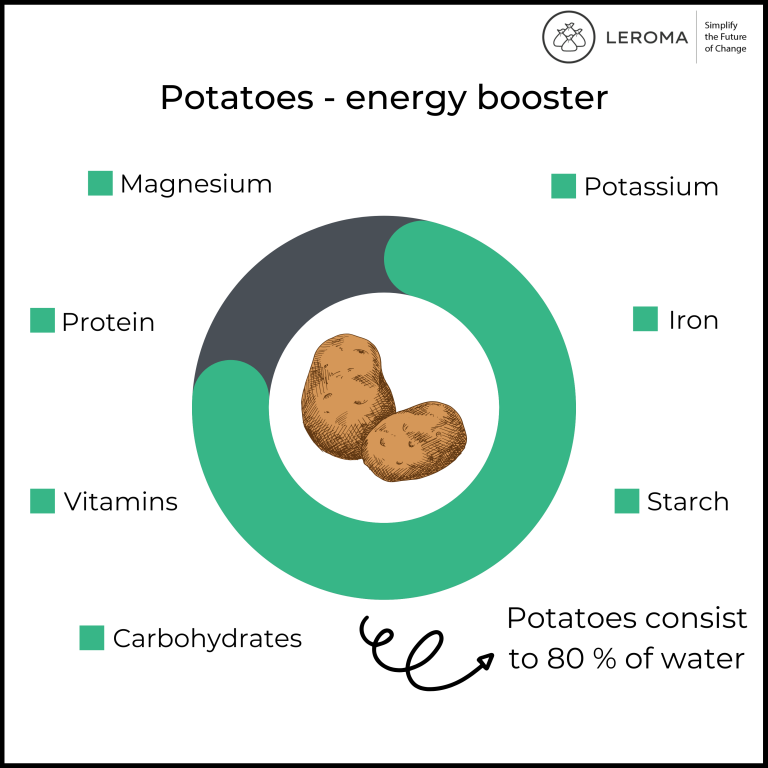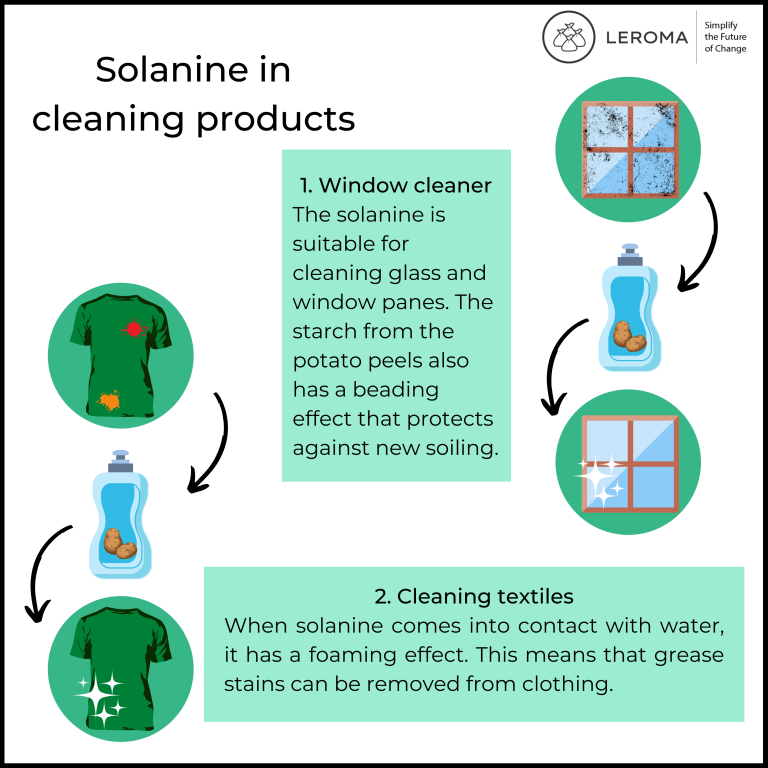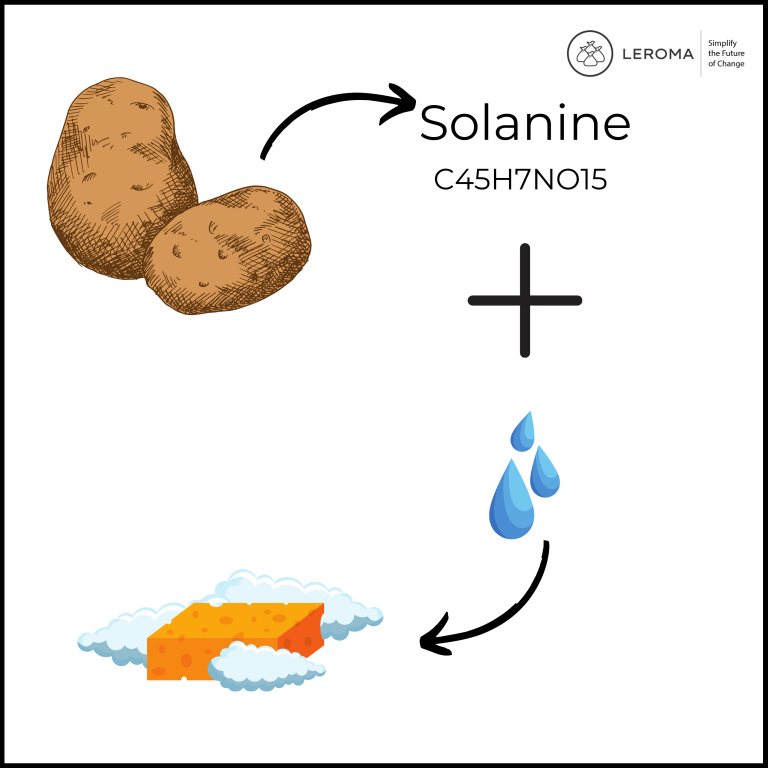About the power of potato peels
The potato is a crop that is grown almost everywhere in the world due to its great adaptability. The term "potato" generally refers to the tuber of the plant that grows in the ground, of which more than 370 million tons are harvested worldwide each year. It is one of the most important staple foods in the world; in Germany alone, per capita consumption is almost 60 kilograms per year.
Potatoes consist of 80% water and are rich in vitamins, proteins, minerals such as potassium, magnesium and iron, and carbohydrates. They also contain starch, few calories and virtually no fat.
Despite the valuable ingredients, 1.5 million tons of the healthy tuber do not make it past the beginning of the value chain in Germany each year, meaning they are already disposed of before they are processed into end products or made available to consumers. Mostly because they are not the right color, shape or size or have minor visual defects, although they are still edible.
In addition, these figures include only the potatoes that are actually harvested. If the unharvested tubers are included, the waste is even higher.
In the process, not only the part of the potato that we consume is lost, but also the skin. In many eyes, it is considered a residual material anyway and is usually discarded when the tubers are processed, although it also has a lot of potential.
In our article on
bioplastics, we already introduced you to one application of potato peelings. In short, starch can be used to produce biodegradable plastic, and this can be obtained not only from cereals, rice and legumes, but also from potatoes and potato peels. Making more use of the skins and surplus potatoes that do not reach the market or production would make the production of bioplastics more sustainable, because currently starchy foods are grown specifically for the extraction of starch, even though there are enough residues that could be saved from the trash.
Potato starch can also replace food starch in cooking and baking because, like wheat starch or corn starch, it is suitable, among other things, as a binder for sauces and ensures that dough becomes light and airy.
Potato pulp
When starch is extracted from potatoes, a by-product is the so-called "potato pulp", which consists of fibrous components of the tuber and starch residues that could not be extracted. The pulp consists of 87 to 88% water and contains few vitamins, proteins and minerals, but is rich in carbohydrates and is therefore used as an energy-rich feed additive for livestock such as cows and cattle. It is dried beforehand for this purpose. Pulp, which contains potato peelings, is also suitable as feed.
Not only potato pulp but also poorly marketable potatoes, which are sorted out because of optical defects, can be fed, for example in the form of animal feed pellets. Furthermore, potato pulp can be consumed not only by animals but also by humans. In South America, for example, the pulp is boiled in water or milk to make dumplings and served as a dessert.
Potato peels
If you do some research on the internet, you may come across a tip that you can process potato scraps, such as the peels, into chips, but this is not advisable.
Potato peels contain solanine, which is one of the glycoalkaloids. Glycoalkaloids are toxic substances found in nightshade plants, which are supposed to protect them from pests and pathogens. If solanine is ingested in large quantities, it can cause symptoms of poisoning. Solanine is found mainly in the peel, especially at the germination sites, but also in greenish discolored areas of the tuber.
However, the fact that the peels are rather unsuitable for consumption does not mean that they no longer have any use.
Precisely because of the solanine they contain, they can serve as an
ingredient in cleaning agents. Solanine dissolves grease and even produces a soap-like foam when it comes into contact with water. Thus, a biological detergent made from potato peels can be used to remove grease stains from clothing, or to clean carpets and stainless steel surfaces. In addition, it can also be used to clean glass, such as window panes. The starch contained in the potato peels additionally causes a beading effect there, which protects against new soiling. Furthermore, potatoes and their peels contain oxalic acid, which is also found in chemical cleaning agents and can dissolve rust and lime.
Potato peels can be used not only in the cleaning industry, but also in the
cosmetics industry. Because of the vitamins they contain, they can be processed, for example, into hair care products that strengthen the hair and make it supple. In addition, vitamin B ensures shiny hair, as it regulates the activity of the sebaceous glands, which release greasy secretions to the surface of the skin. With regular use, blond hair becomes slightly darker. The same applies to gray hair, which becomes less visible over time.
In addition, potato peels contain antioxidants, antibacterial compounds as well as phenols and have a bleaching effect on the skin. So they can be used to lighten dark spots such as dark circles under the eyes and create a balanced complexion. Furthermore, cosmetic products made from potato peels can moisturize the skin while absorbing excess oil, the most common cause of blemished skin. The peels also have a soothing effect on skin irritations such as acne and pimples.
Potato peels as well as residues from potato processing can also be converted into lactic acid, which can be used in a variety of ways to manufacture cleansing and cosmetic products. Alternatively, the raw material can even be converted into methanol, which is used as a fuel, among other things.
Additionally, potato peels can also be used in the
pharmaceutical industry, as they have a soothing effect on burns as well as inflammations and provide the skin with moisture. They also have antibacterial properties. It is also possible to extract many other ingredients to use them for medicinal purposes. For example, chlorogenic acid, which is found in both the tubers and the skins of the potato, has many health benefits. It has an antimicrobial effect, which means that it inhibits the growth of germs, kills microorganisms and helps with bacterial infections. It also reduces the formation of the stress hormone cortisol, which in excessive amounts increases blood pressure and can lead to heart disease and obesity, as well as sleep disorders and difficulty concentrating.
In addition to its use in cleaning agents or cosmetic products, potato peel can also be used as kindling for stoves and fireplaces and as fuel, as it burns very slowly and has a relatively long afterglow. As you can see, the peel is a raw material that should not be underestimated, and it has probably not yet developed its full potential.
If we transform the residual material into a recyclable material, the emergence of a circular economy is favored, where raw materials are reused instead of wasted.
The corona pandemic presents us with further challenges, as currently even more potatoes are being wasted than usual. Restaurants and fast food outlets, which are normally major consumers because they turn the tuber into French fries, have closed down, leaving a million tons of potatoes in the Netherlands alone.
In such times, alternative uses must be found in the future to process valuable raw materials. While it is preferable to make them available for human consumption, if that is not possible, they should increasingly be passed on to other industries. In this way, we can avoid having to dispose of tons of potatoes, as in this case. However, it is important that there is no economic damage if the source of raw materials fails, because when restaurants are allowed to reopen, the demand for potatoes quickly increases again. We can only find a solution to such problems if we work together across sectors.
Let’s simplify the future of change!







